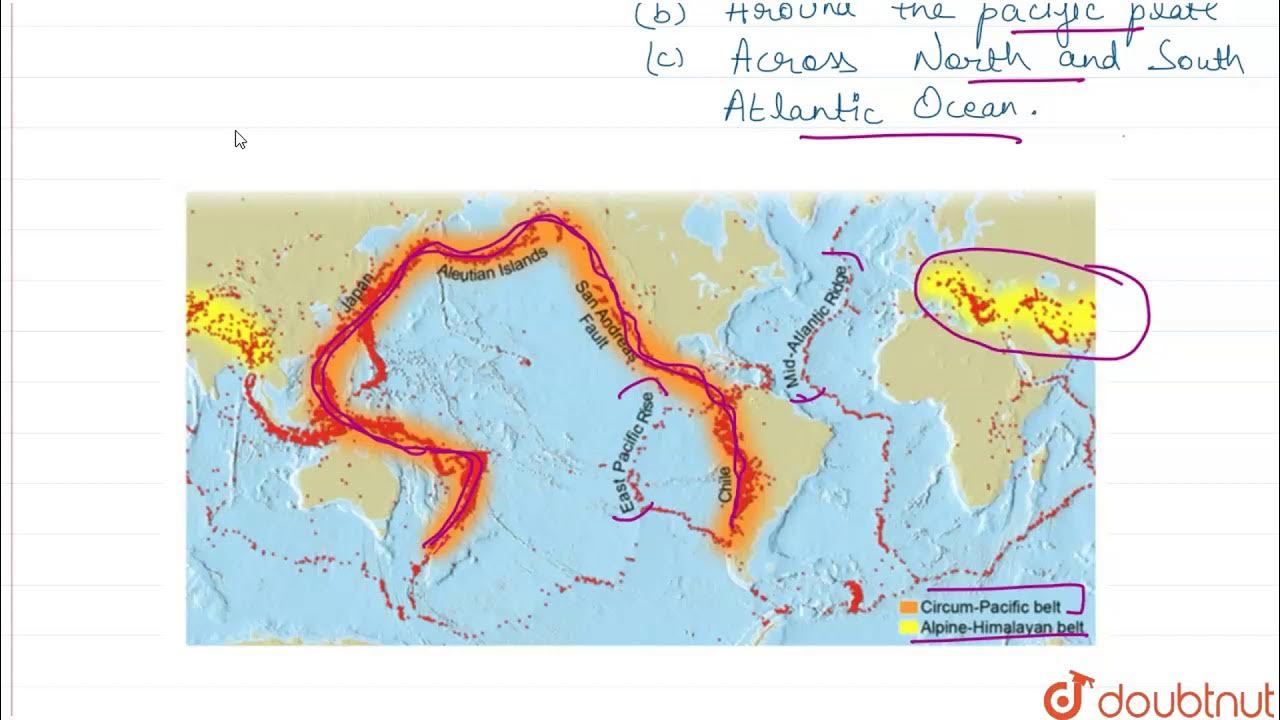Pourquoi y a-t-il des tremblements de terre ? - 1 jour, 1 question
Summary
TLDRThis script explains the phenomenon of earthquakes and tectonic plate movements. The Earth's surface consists of tectonic plates that move a few centimeters annually, sometimes colliding or rubbing against each other, causing energy to be released in the form of earthquakes. When the tension between plates becomes too strong, rocks break, and the stored energy causes the ground to shake. The script also discusses how earthquake magnitude is measured, with higher magnitudes leading to more destruction. It mentions notable earthquakes, including the 9.5 magnitude Chile earthquake in 1960 and the 2015 Nepal earthquake.
Takeaways
- 🌍 The Earth's surface is a massive puzzle of constantly moving pieces, known as tectonic plates.
- 🧩 These tectonic plates shift a few centimeters per year, moving in different directions.
- 💥 When these plates collide or rub against each other, it releases enormous energy, causing earthquakes.
- 🌪 Earthquakes occur because tension builds up as plates move and press against each other until the rocks suddenly break.
- 🔊 The energy released from this break spreads vibrations through the ground, resulting in an earthquake.
- 📊 Earthquakes are measured in magnitude; a quake below magnitude 3 is usually not felt by people.
- 🏢 From magnitude 5 and above, fragile buildings may be affected, and at magnitude 7+, significant damage occurs.
- 🔝 The most powerful earthquake ever recorded had a magnitude of 9.5 and occurred in Chile in 1960.
- 🏚️ The earthquake in Nepal on April 25, 2015, had a magnitude of 7.9 and caused severe damage, especially in poorer regions with fragile buildings.
- ❓ The video encourages curiosity and answers questions about the natural phenomena of earthquakes.
Q & A
What are tectonic plates?
-Tectonic plates are large pieces of Earth's surface that move and interact with each other. They form a gigantic puzzle that is always in motion.
How fast do tectonic plates move?
-Tectonic plates move a few centimeters per year in different directions.
What happens when tectonic plates collide or rub against each other?
-When tectonic plates collide or rub against each other, it causes a release of massive energy, leading to earthquakes.
Why does the Earth tremble during an earthquake?
-The Earth's surface trembles because the rocks under the ground break under tension, releasing accumulated energy. This energy causes vibrations that spread through the ground, resulting in an earthquake.
What determines the severity of an earthquake?
-The severity of an earthquake depends on how much energy has been accumulated before it is released. The longer the tension builds up, the stronger the earthquake.
How is the strength of an earthquake measured?
-The strength of an earthquake is measured using a scale called magnitude. A magnitude below 3 is usually not felt by humans, while a magnitude of 5 can damage fragile buildings.
What happens during a magnitude 7 or higher earthquake?
-In an earthquake with a magnitude of 7 or higher, most buildings, even those that are well-constructed, are severely damaged.
What was the most powerful earthquake ever recorded?
-The most powerful earthquake ever recorded was in Chile in 1960, with a magnitude of 9.5.
How strong was the earthquake in Nepal in 2015?
-The earthquake in Nepal on April 25, 2015, had a magnitude of 7.9, and many buildings, especially in poorer areas, did not survive the impact.
Why are earthquakes more devastating in poorer countries?
-Earthquakes are often more devastating in poorer countries because buildings are not as well-constructed or resilient, making them more vulnerable to damage.
Outlines

Cette section est réservée aux utilisateurs payants. Améliorez votre compte pour accéder à cette section.
Améliorer maintenantMindmap

Cette section est réservée aux utilisateurs payants. Améliorez votre compte pour accéder à cette section.
Améliorer maintenantKeywords

Cette section est réservée aux utilisateurs payants. Améliorez votre compte pour accéder à cette section.
Améliorer maintenantHighlights

Cette section est réservée aux utilisateurs payants. Améliorez votre compte pour accéder à cette section.
Améliorer maintenantTranscripts

Cette section est réservée aux utilisateurs payants. Améliorez votre compte pour accéder à cette section.
Améliorer maintenantVoir Plus de Vidéos Connexes
5.0 / 5 (0 votes)






